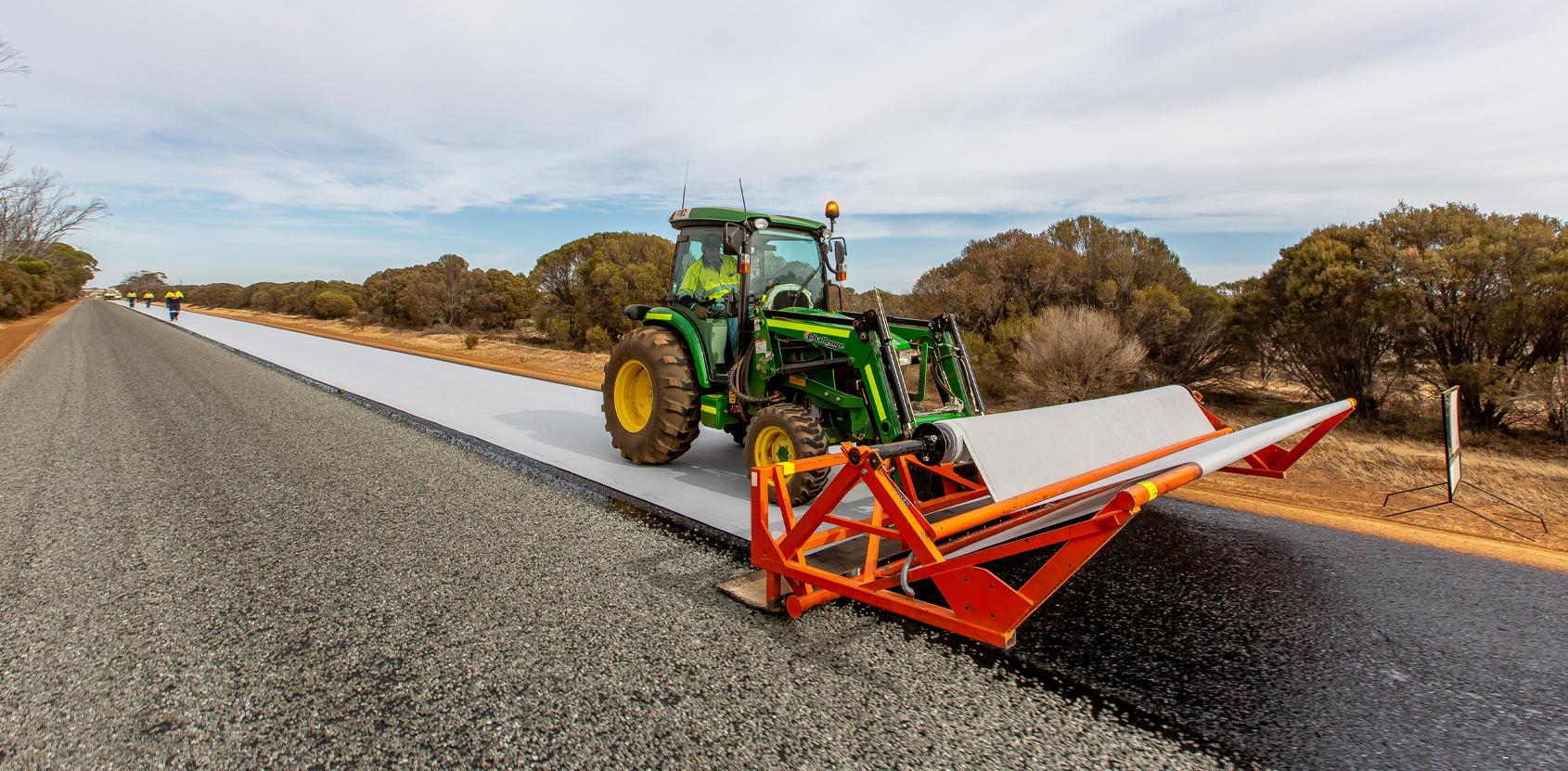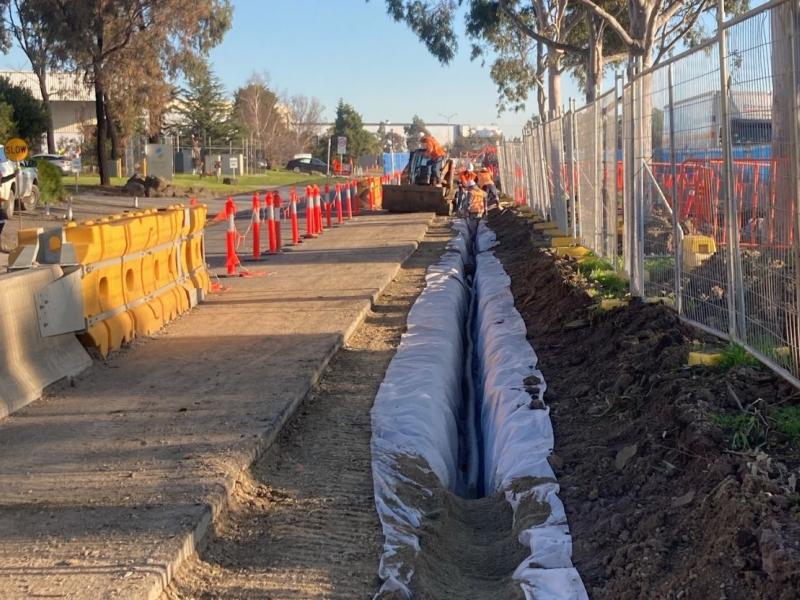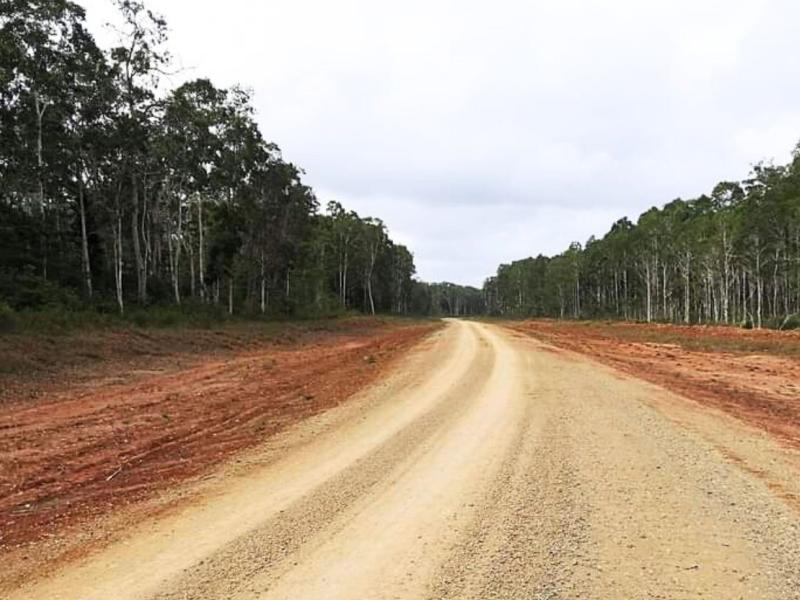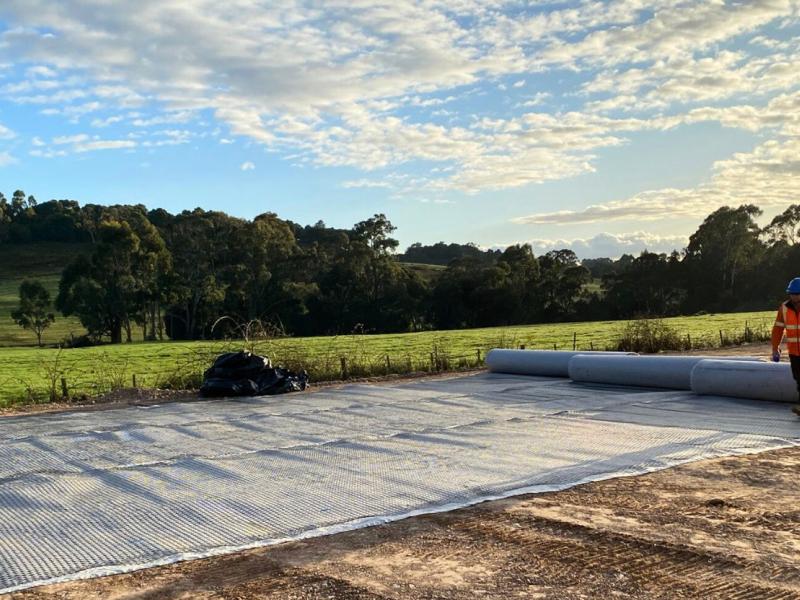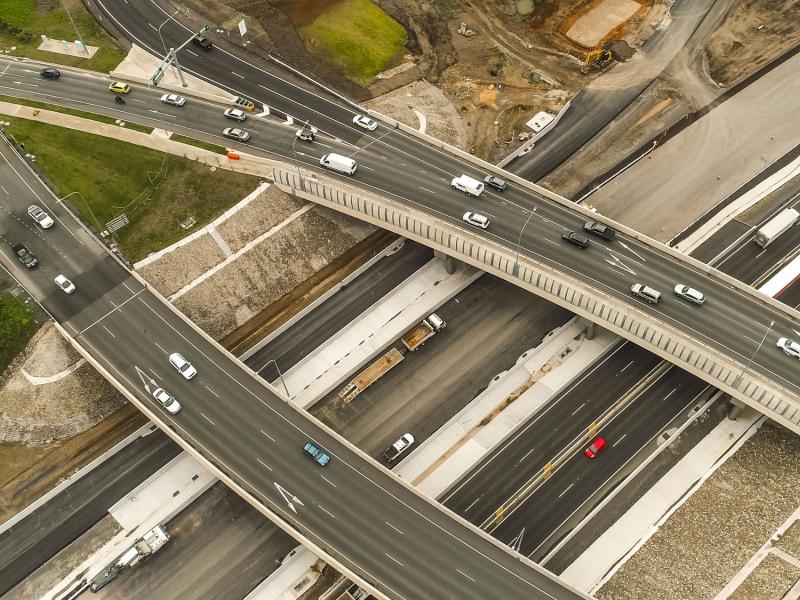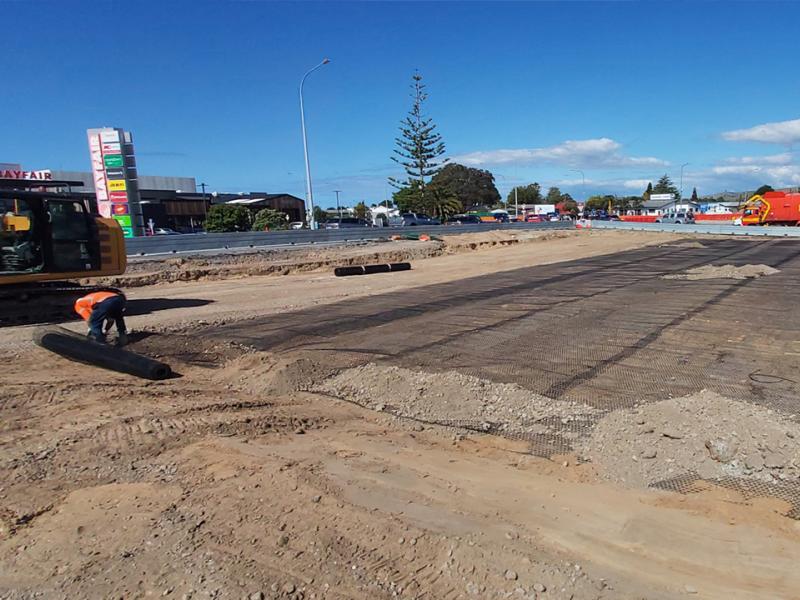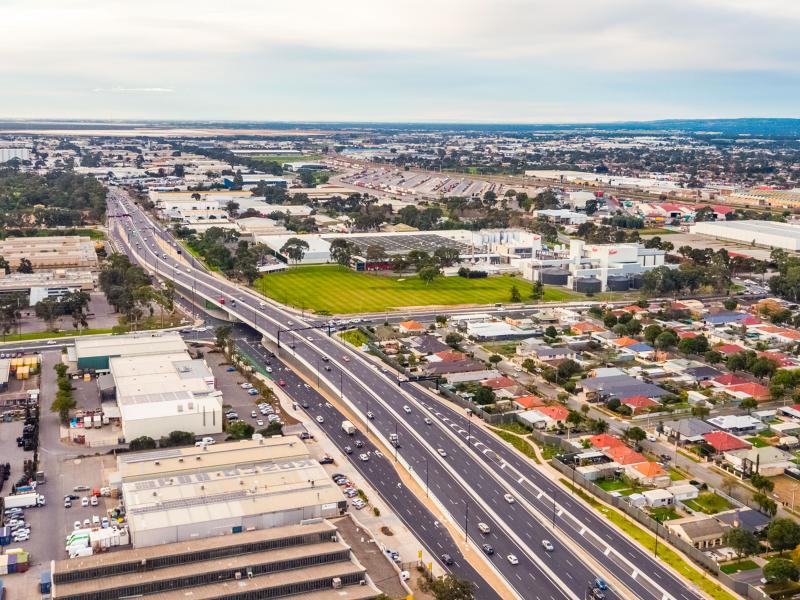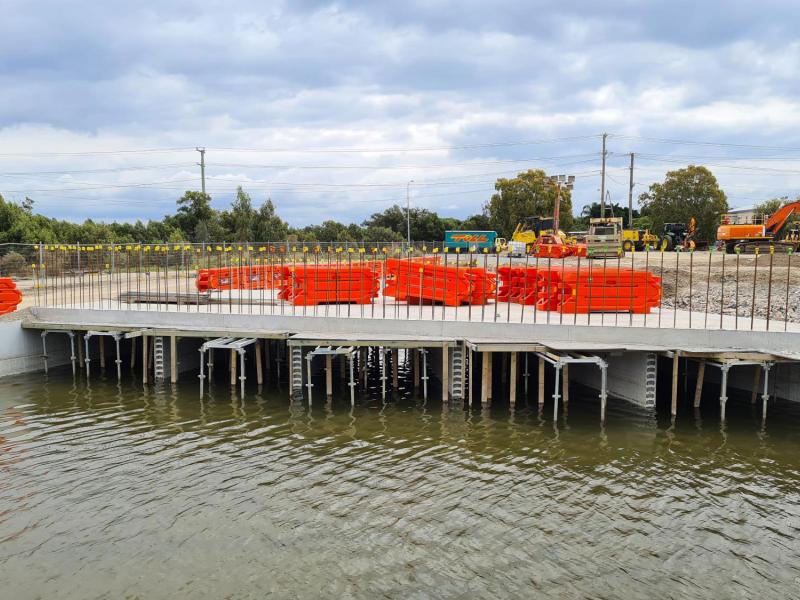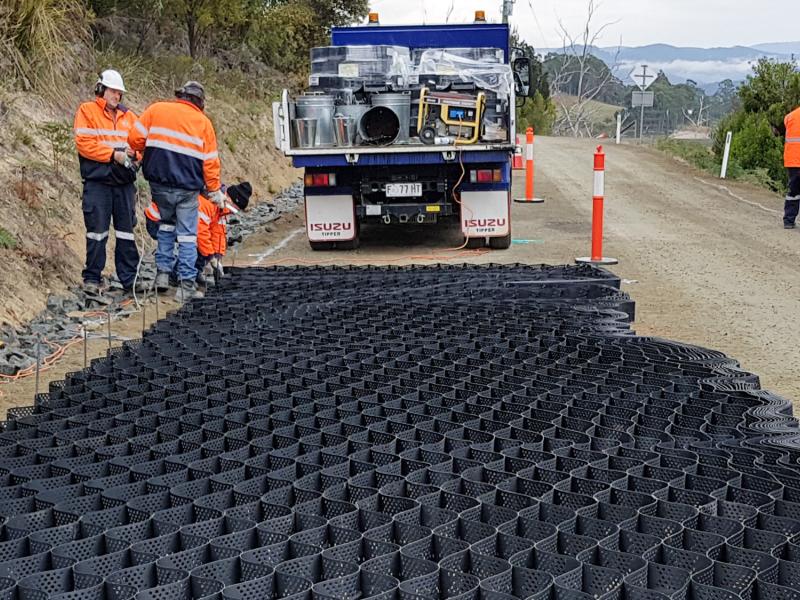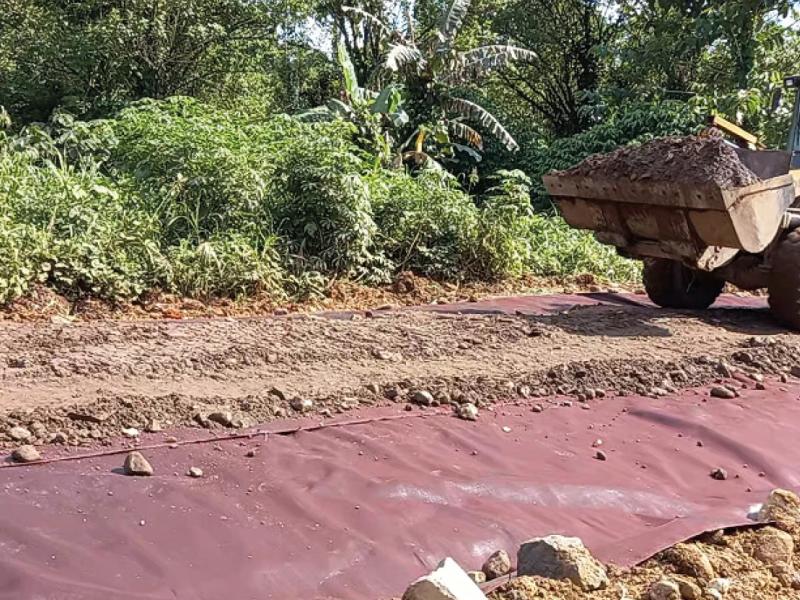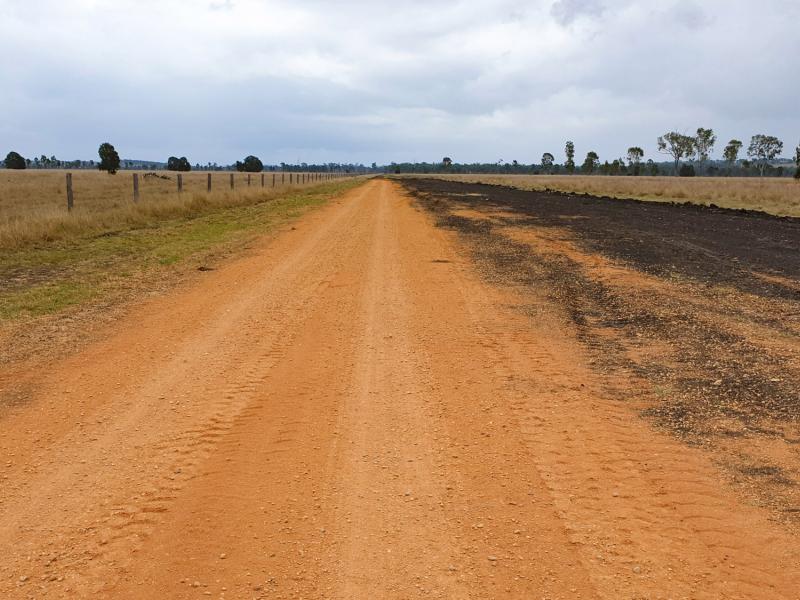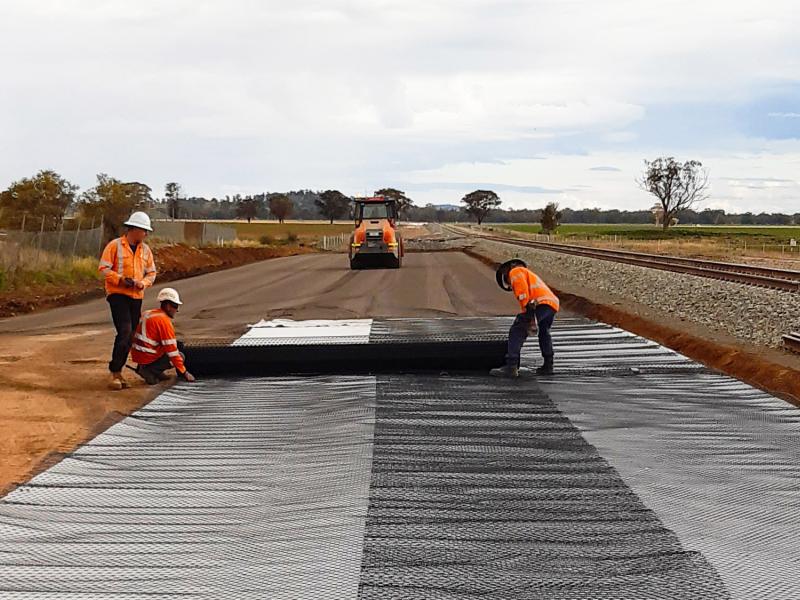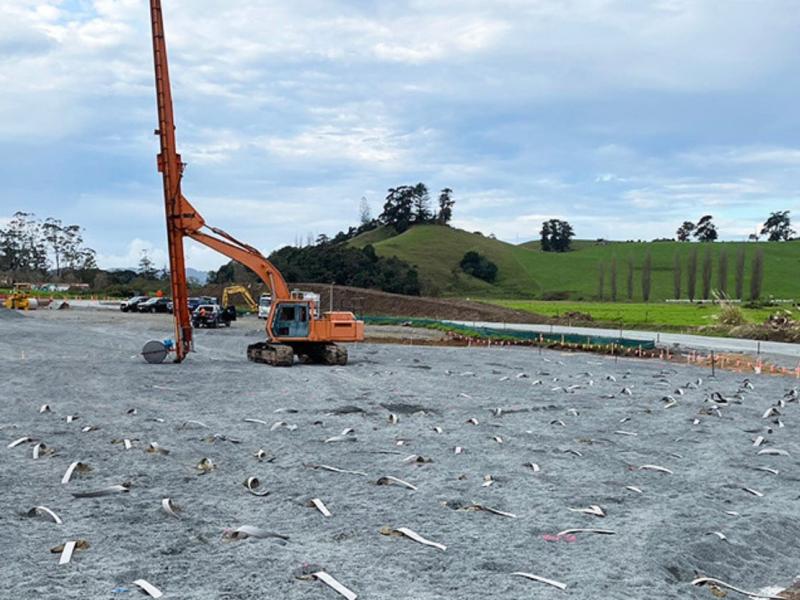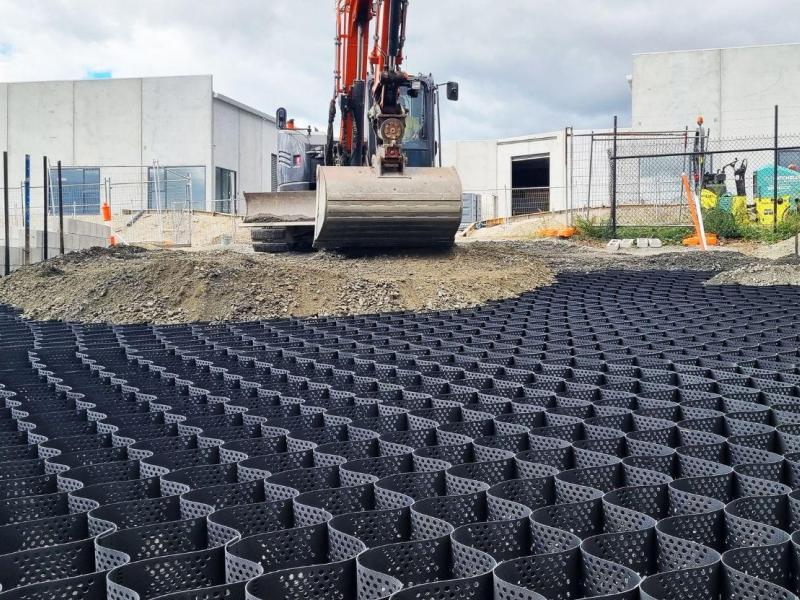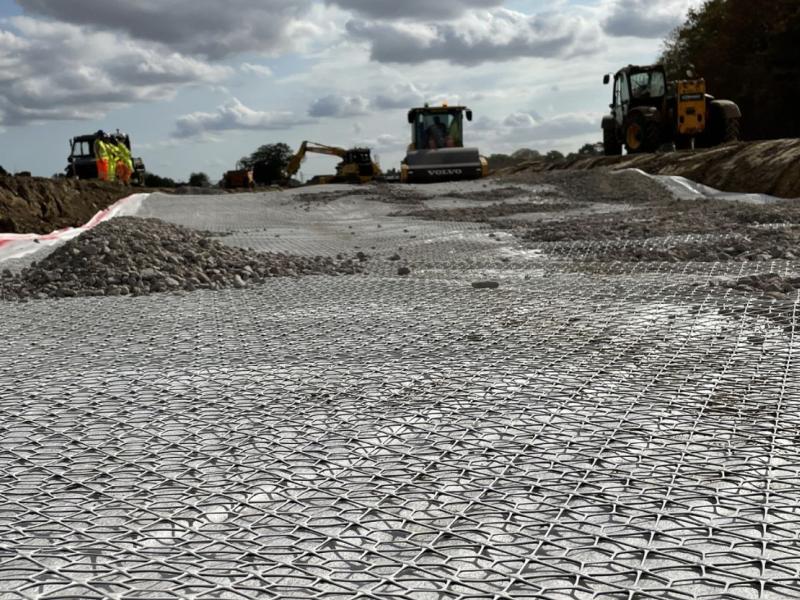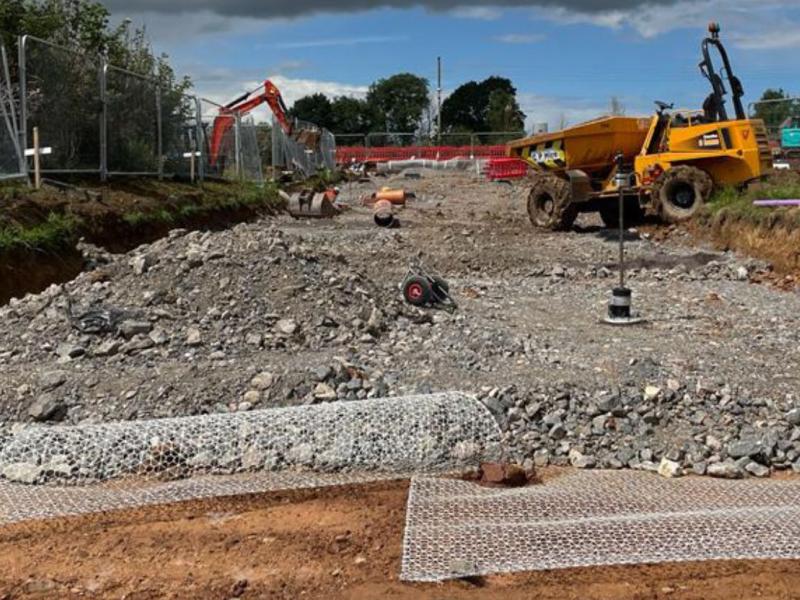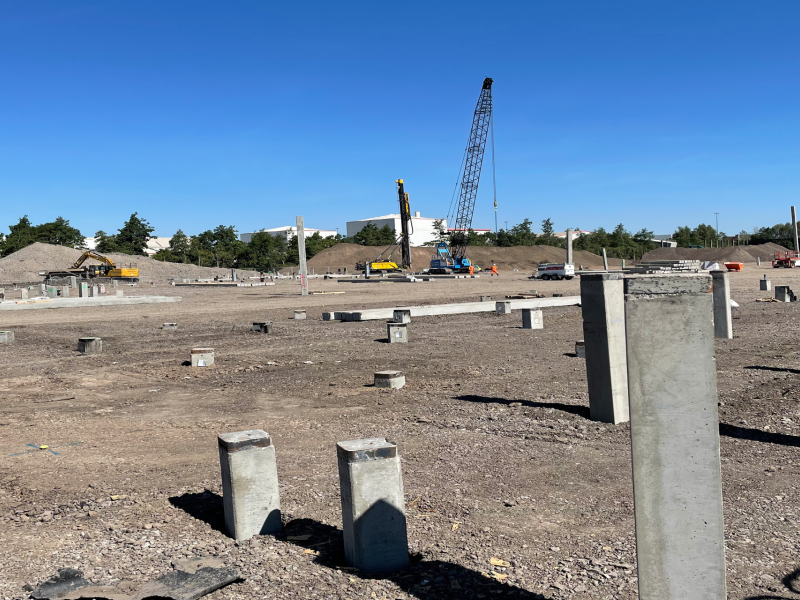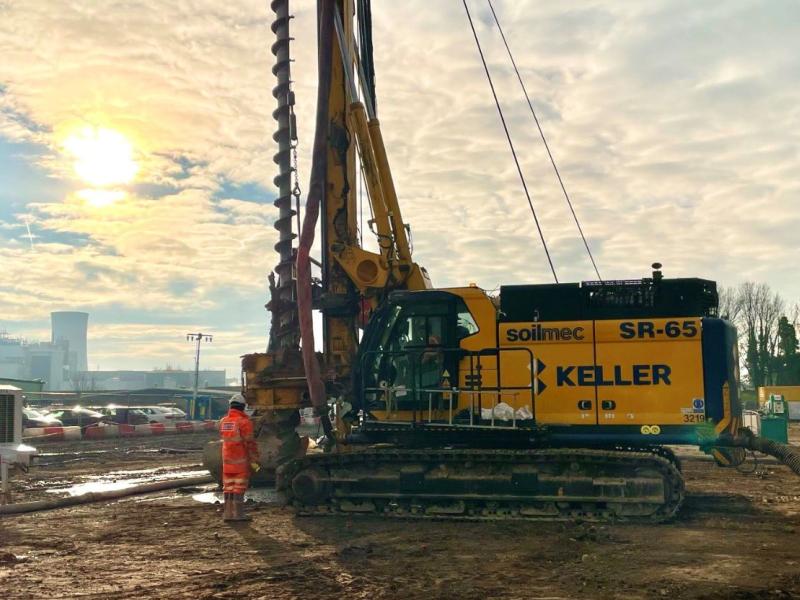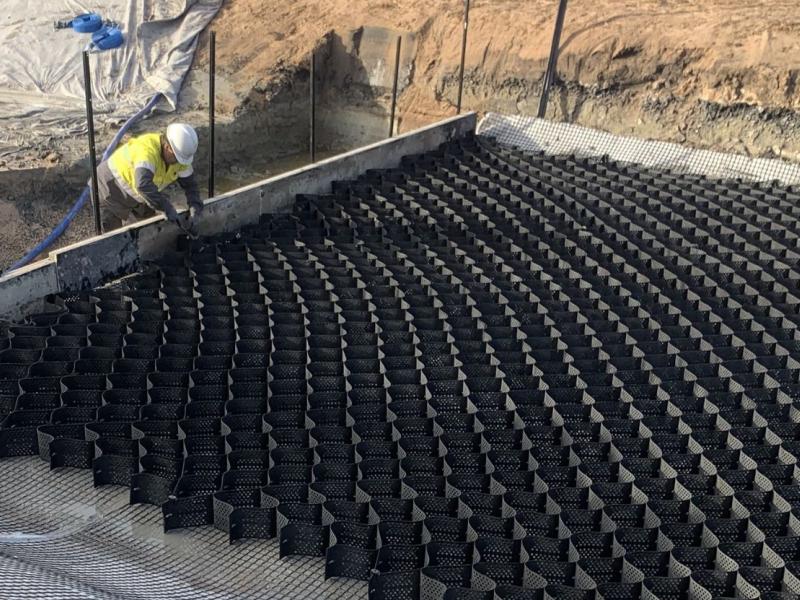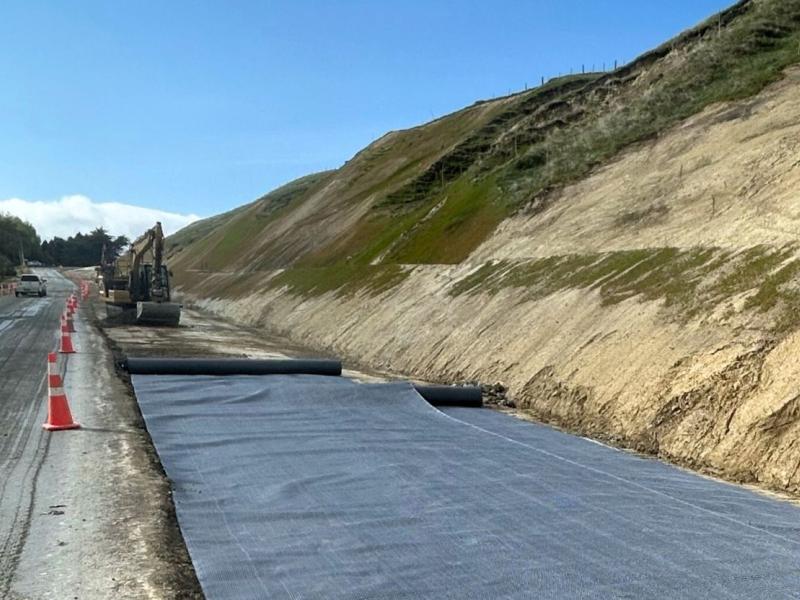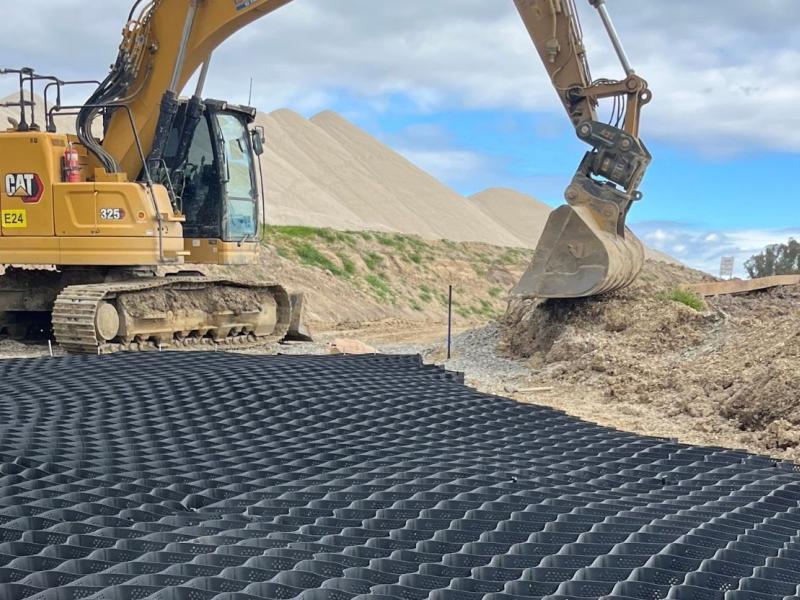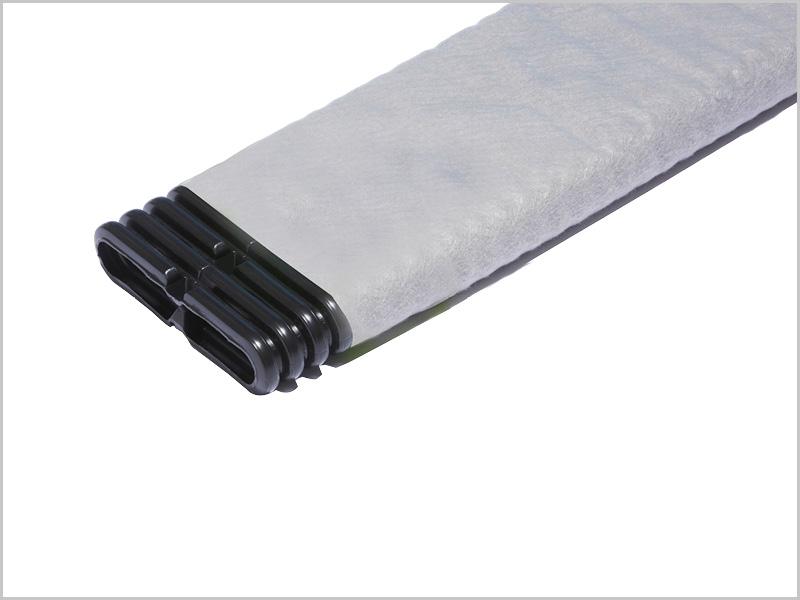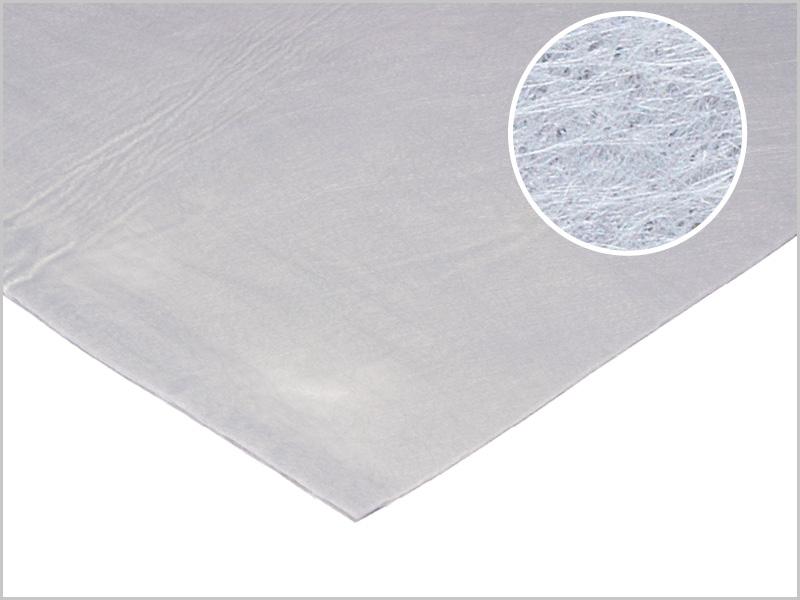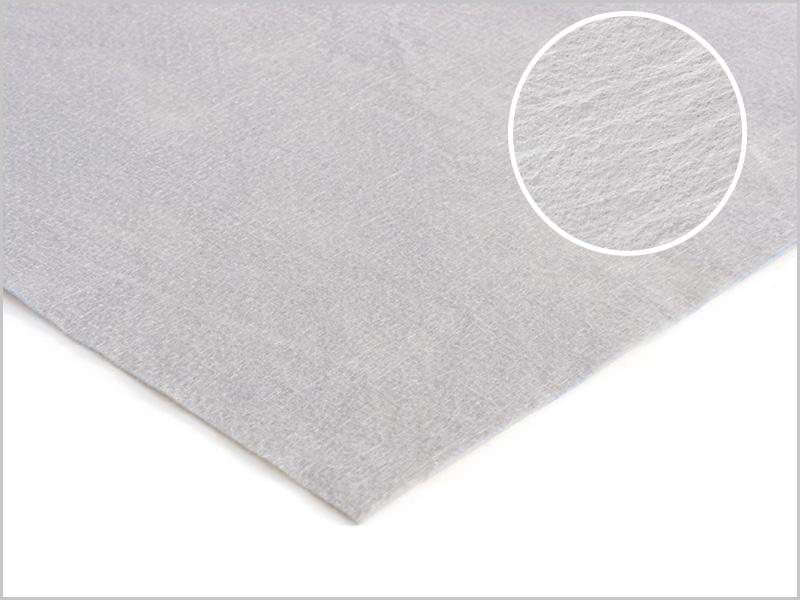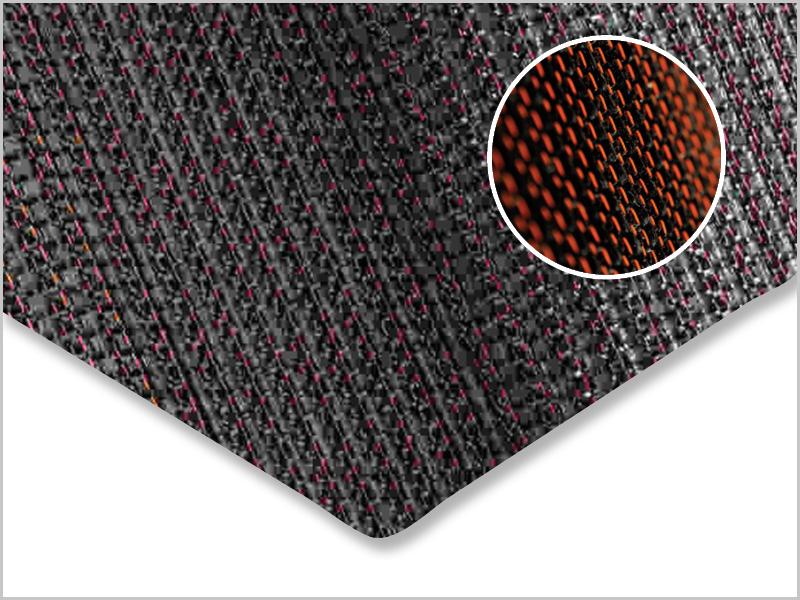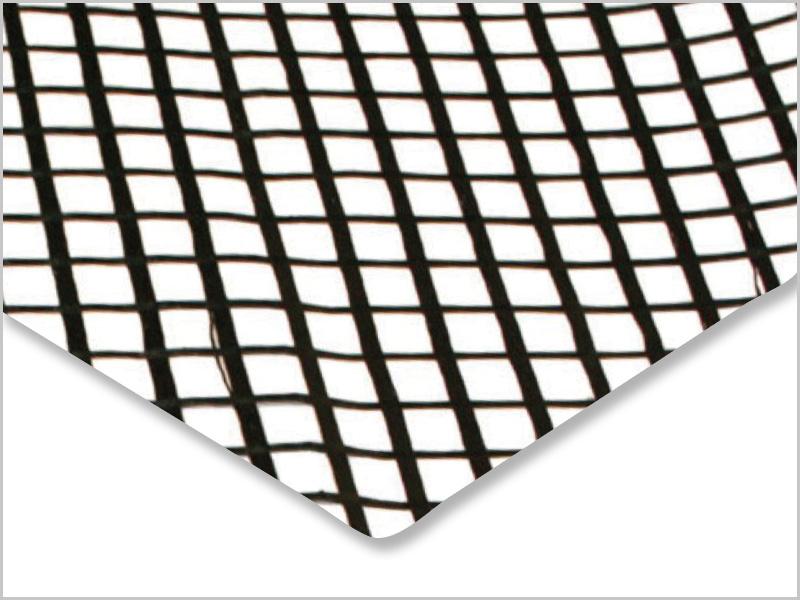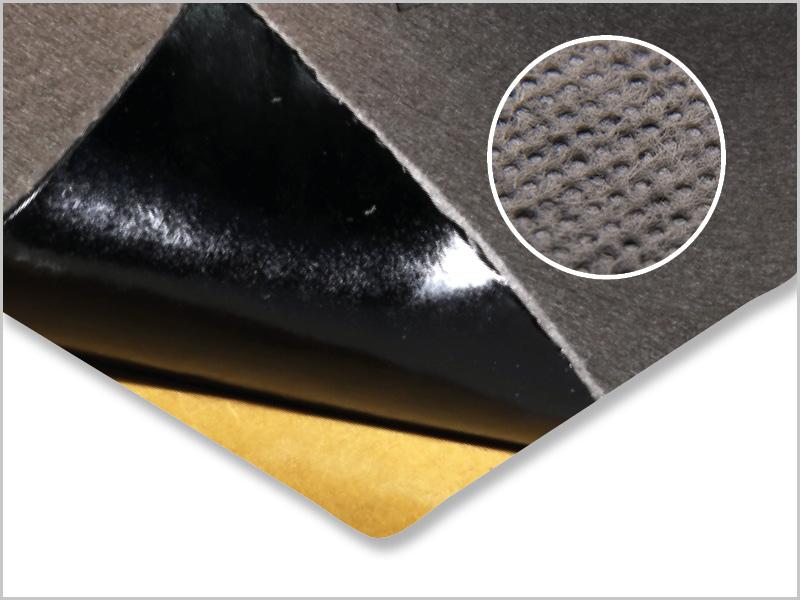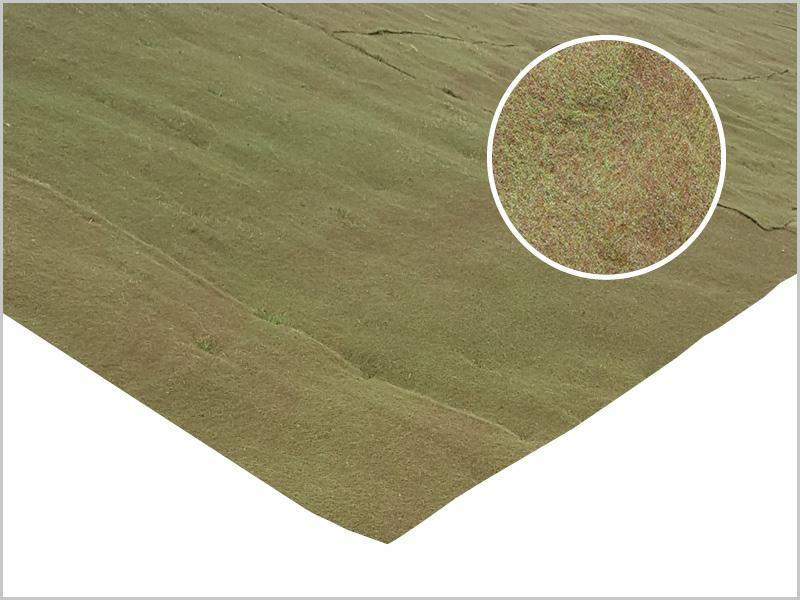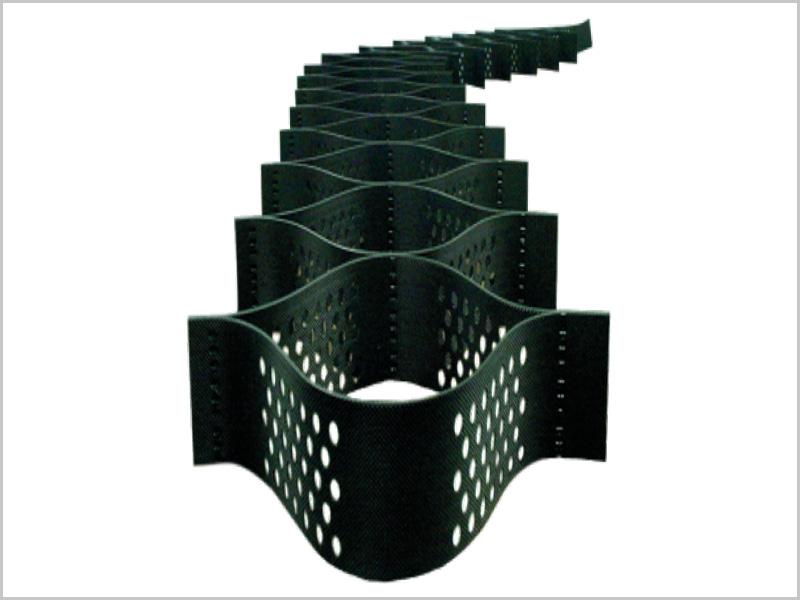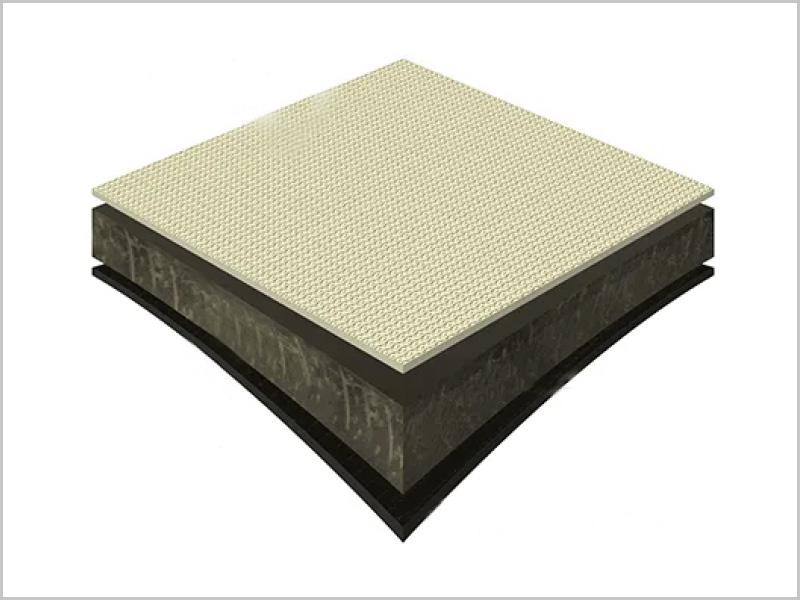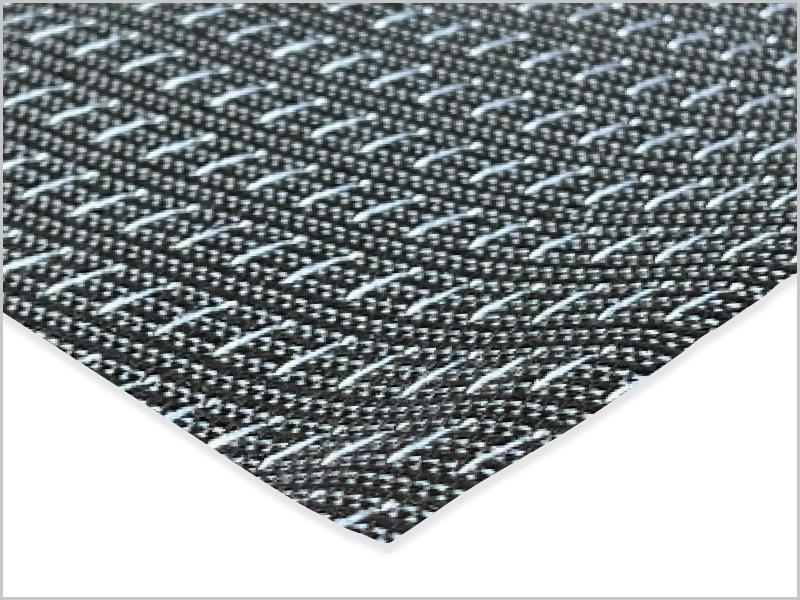
Geosynthetics for Road Infrastructure
Geofabrics geosynthetics are used in roads to ensure the best construction performance to both minimise construction costs and prevent costly maintenance disruptions. Geofabrics provide solutions that encompass all road types, from temporary access tracks to high volume roads.
- New road construction on soft ground and general unpaved roads
- Utilisation of site-won fill or reduction in quarried material required
- Improved structural performance of roads
- Improved road surface performance of high traffic areas
- Embankments in coastal areas
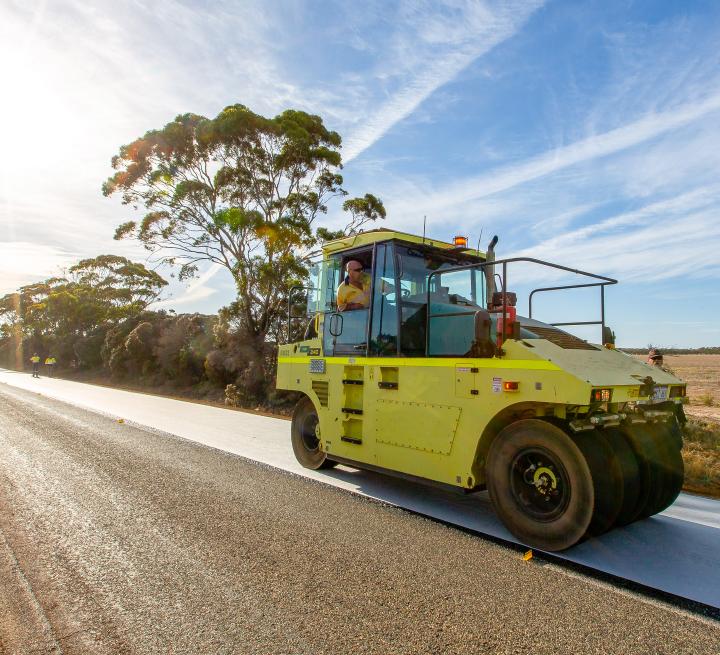
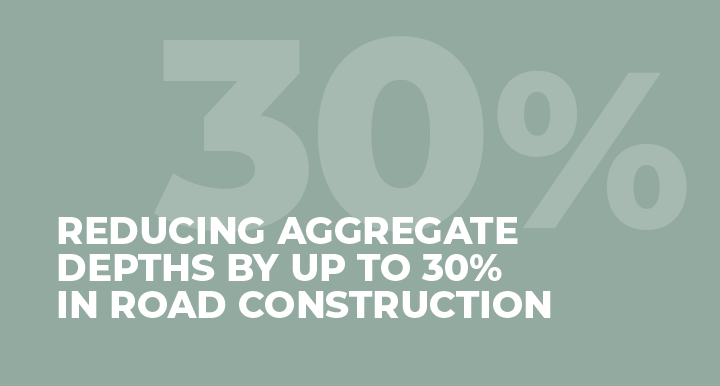
APPLICATIONS
Asphalt Sealing & Reinforcement
Increased traffic imposes higher strains within asphalt pavements which fatigues the asphaltic layers, resulting in asphalt cracking and water penetration into the pavement, leading to further deterioration. Asphalt reinforcement provides fatigue resistance, mitigating subgrade rutting and reducing cracking through improved shear resistance.
Geofabrics offers Tensar AR-G geocomposite a proven pavement reinforcement technology for retarding cracking and controlling deformation as well as the specialist range of GlasGrid asphalt reinforcement geogrids that can be used in asphalt overlays as thin as 40mm.
Sealmac Green is a geotextile paving fabric that is impregnated with bitumen to act as a stress absorbing membrane under chip seals and asphalt pavements, as well as Bitac® bandage strips which are often used under asphalt to control crack reflection and seal construction joints.
Ground & Pavement Stabilisation
TriAx triaxial geogrids are used to provide effective confinement of granular fill in subgrades. This results in a stiff mechanically stabilised layer, capable of controlling differential settlement, reducing aggregate depths by up to 30%, capping weak deposits and increasing bearing capacity.
When faced with ever-increasing earthworks costs, Mirafi RSi multifunctional woven geotextiles are the ultimate solution for base course reinforcement and subgrade stabilisation. Mirafi RSi integrates four performance functions in one superior geotextile: reinforcement, separation, filtration and aggregate confinement. It offers engineers and contractors significant cost savings in earthworks using site-won material and outstanding improvement in road base performance. Its performance has been rigorously tested by independent research institutes, funded by State Highway authorities in the USA.
Subsoil Drainage
Subsurface drainage and water removal is critical in maintaining structural integrity and reducing deterioration.
Megaflo Green is an alternative to conventional, round agi drain pipe that collects and removes water rapidly due to its unique flat shape and ribbed profile. It provides the dimensional stability and field-proven structural strength for quick, effective subsurface drainage.
Compared to 100 mm diameter round agi pipe, Megaflo Green drains water up to 4.9 times faster. Its slim 40 mm wide profile permits faster and more cost-effective installation in a narrower trench.
Embankments
Basal reinforcement encompasses embankments over soft soils, on piles and over cavities. Reinforced embankments are essentially constructed to hold back water, carry a roadway, and generally create an elevated area of land. Geosynthetics reinforce the shear stresses of the fill material leading to an increase of the foundation bearing capacity.
Geofabrics offers Mirafi PET high strength woven geotextiles as a cost effective solution to achieve a greater and quicker stability of embankments constructed on soft foundations. With Mirafi PET, steeper side slopes and embankment heights can be optimised over a minimum area. The resistance to outward movement of the embankment will not only allow platforms to achieve greater stability but also surface settlement control.
Erosion & Sediment Control
Erosion control mats are generally classified as either biodegradable, composed entirely of natural fibres and typically used as a temporary protective cover, or non-biodegradable, made from synthetic materials designed to provide long-term or permanent protection. These categories primarily differ in their material composition, mat thickness, and intended applications.
The primary objective of using geosynthetics in erosion control is to preserve soil cover, either as a temporary solution to prevent soil loss during vegetation establishment, or as a long-term permanent measure, often applied to steeper slopes such as those along road shoulders.
